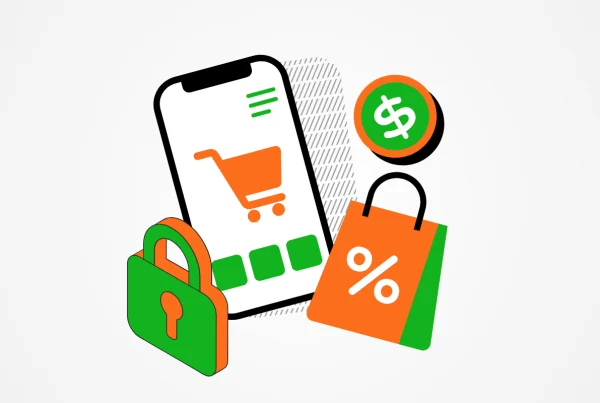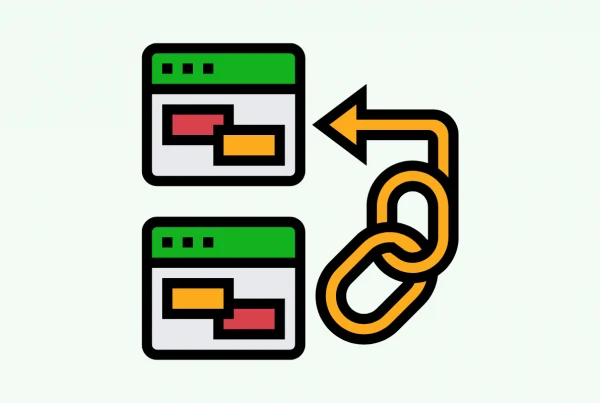Static vs dynamic internal linking: Which one should you use?
Estimated reading time: 6 minutes

When it comes to optimizing your website for SEO and user experience, internal linking plays a crucial role. But as your product catalog grows, the question becomes: should you rely on static internal linking or switch to dynamic internal linking?
Let’s break down the difference, the benefits of each, and how to combine both strategies effectively for maximum SEO impact.
Static internal linking involves manually placing links within your website—typically in navigation menus, footers, or on-page content. This approach gives you full control over anchor text and destination pages. It’s especially useful for:
- Homepages
- Top-level category pages often in the navigation bar menu
- Evergreen content
However, static linking has limitations:
- It’s time-consuming to maintain.
- It doesn’t scale well with large catalogs.
- Links can become outdated (e.g., after seasonal changes or product availability updates).
For these reasons, static linking alone isn’t always the right solution, especially when there’s a risk of linking to empty or unpublished pages.
Enter dynamic internal linking
Dynamic internal linking uses rules or algorithms to automatically insert internal links across your website. It’s especially powerful for e-commerce and classified websites that deal with thousands or even millions of products that frequently change.
Why choose dynamic linking?
- It adapts automatically to inventory changes.
- It scales seamlessly for large catalogs.
- It prevents orphan pages, pages without internal links, which search engines struggle to discover.
In short, dynamic internal linking improves both SEO performance and user navigation, helping visitors and search engines find relevant content faster.
Best practices for dynamic internal linking
To get the most out of your dynamic linking setup, make sure to define smart rules:
- Don’t overdo it. Avoid adding too many links per page to prevent PageRank dilution.
- Help search engines. Highlight pages that haven’t been crawled recently to boost indexation speed.
- Prioritize for business impact. Link to products with the highest revenue or margin potential.
- Use clear, relevant anchor text. Skip generic terms like “click here” or “see more”.
- Ensure contextual relevance. Match links to content using advanced algorithms that consider semantic relevance.
Advanced tools such as Vlink, a dynamic internal linking solution developed by Verbolia, allow you to insert links based on contextual proximity.
Real-world example: dynamic linking in action
At Verbolia, we implemented a dynamic internal linking strategy for PMG, a fast-growing pet marketplace operating in six countries. We connected thousands of long-tail keyword pages, outside their core navigation tree, using dynamic linking. PMG wanted to rank pages generated from internal searches that weren’t included in their navigation tree. Without incoming links, these pages remained invisible to Google.
We added a smart block of internal links on other listing pages, designed to appear only when relevant matches were found. Using this approach, we applied advanced rules to automatically promote newly created pages.
The result?
A 15% increase in organic traffic within just 6 months.
More recently, we applied the same methodology for Leboncoin, one of France’s largest classified websites according to a recent study from FEVAD, to ensure their fast-changing inventory remains crawlable and indexable at scale.
So… Static or dynamic? Why not both?
The best approach combines the strengths of both:
- Use static internal links for your core structure (homepage, key categories, main menu).
- Use dynamic internal links for all other pages, especially product pages, filtered results, or long-tail landing pages.
This hybrid strategy ensures that every page contributes to SEO performance and improves overall navigation and discoverability.
Conclusion
As websites grow more complex, dynamic internal linking is no longer a luxury: it’s a necessity for scalable SEO. Whether you run a global e-commerce platform or a fast-moving classified site, leveraging the power of automated linking can unlock significant gains in visibility, traffic, and conversions.
Need help implementing a smart dynamic linking strategy? Get in touch with us at Verbolia.
About The Author
How can Verbolia help your e-commerce platform.


